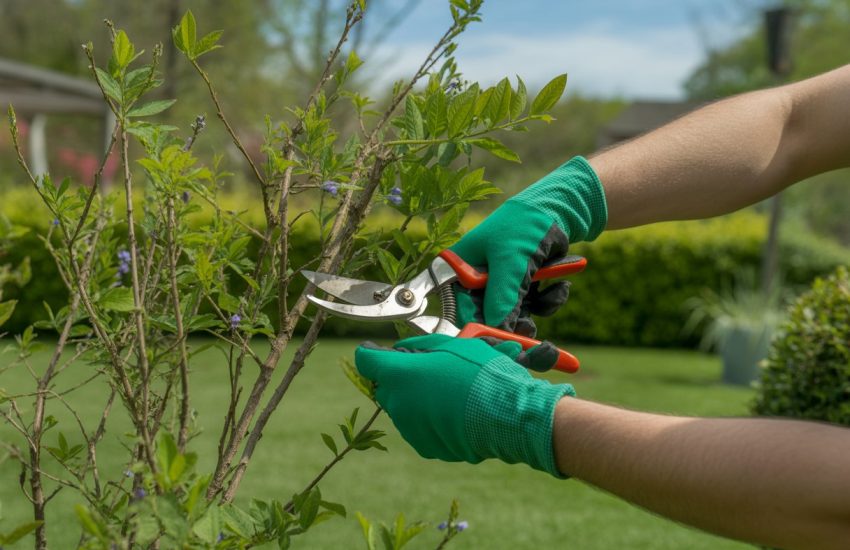When to Plant Nasturtium Seeds: A Guide to Timing Your Planting
Nasturtiums are beautiful and edible flowers that can add a pop of color and flavor to any garden or salad. But when is the best time to plant nasturtium seeds? This is a common question among gardeners, and the answer depends on various factors.
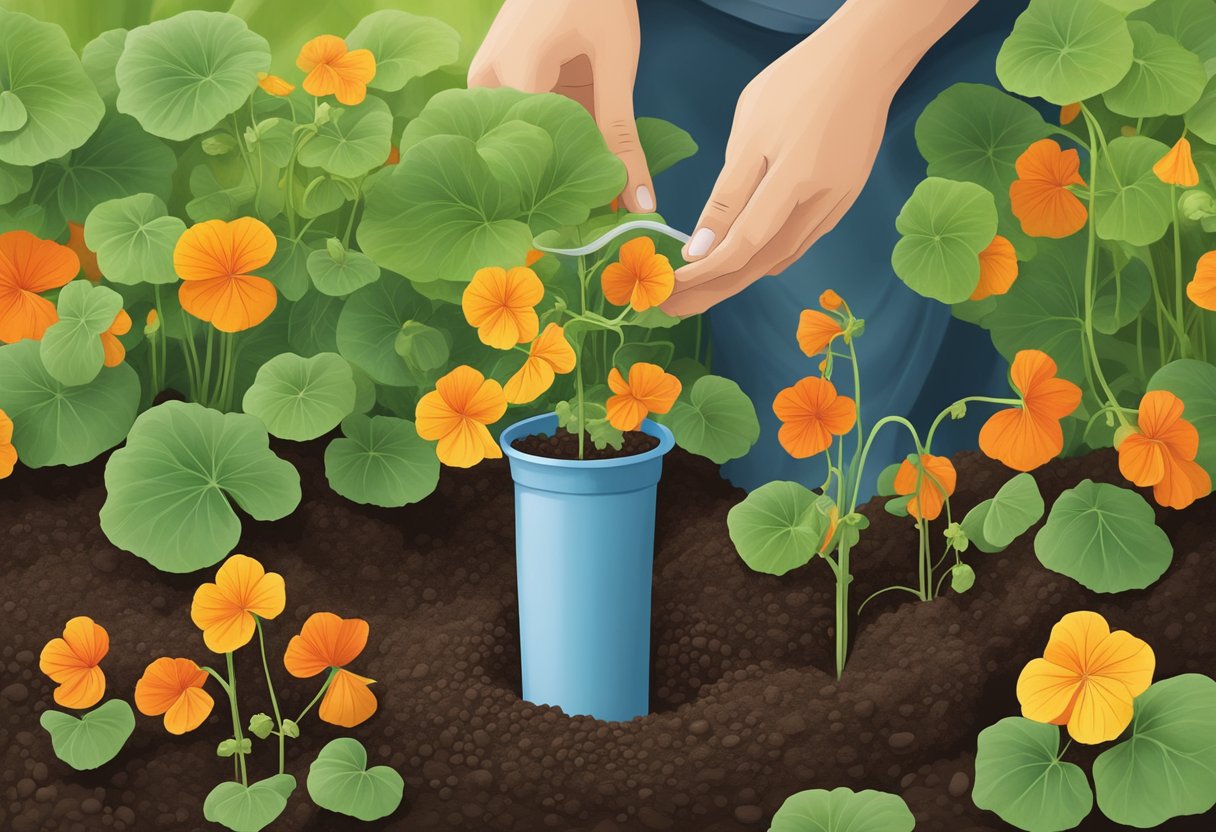
Firstly, it’s important to note that nasturtiums are annual plants that thrive in warm weather. Therefore, it’s best to plant them in the spring after the last frost has passed. This ensures that the seeds have enough warmth and sunlight to germinate and grow properly. Additionally, nasturtiums prefer well-draining soil and full sun exposure, so make sure to choose a suitable location for planting.
Another factor to consider is the purpose of planting nasturtiums. If the goal is to harvest the flowers for salads, it’s best to plant the seeds in early spring so that they bloom in late spring or early summer. This ensures that the flowers are at their peak flavor and appearance. However, if the goal is to use nasturtiums as a ground cover or ornamental plant, they can be planted later in the season as well. Overall, the timing of planting nasturtium seeds depends on the desired outcome and the local climate.
Understanding Nasturtiums
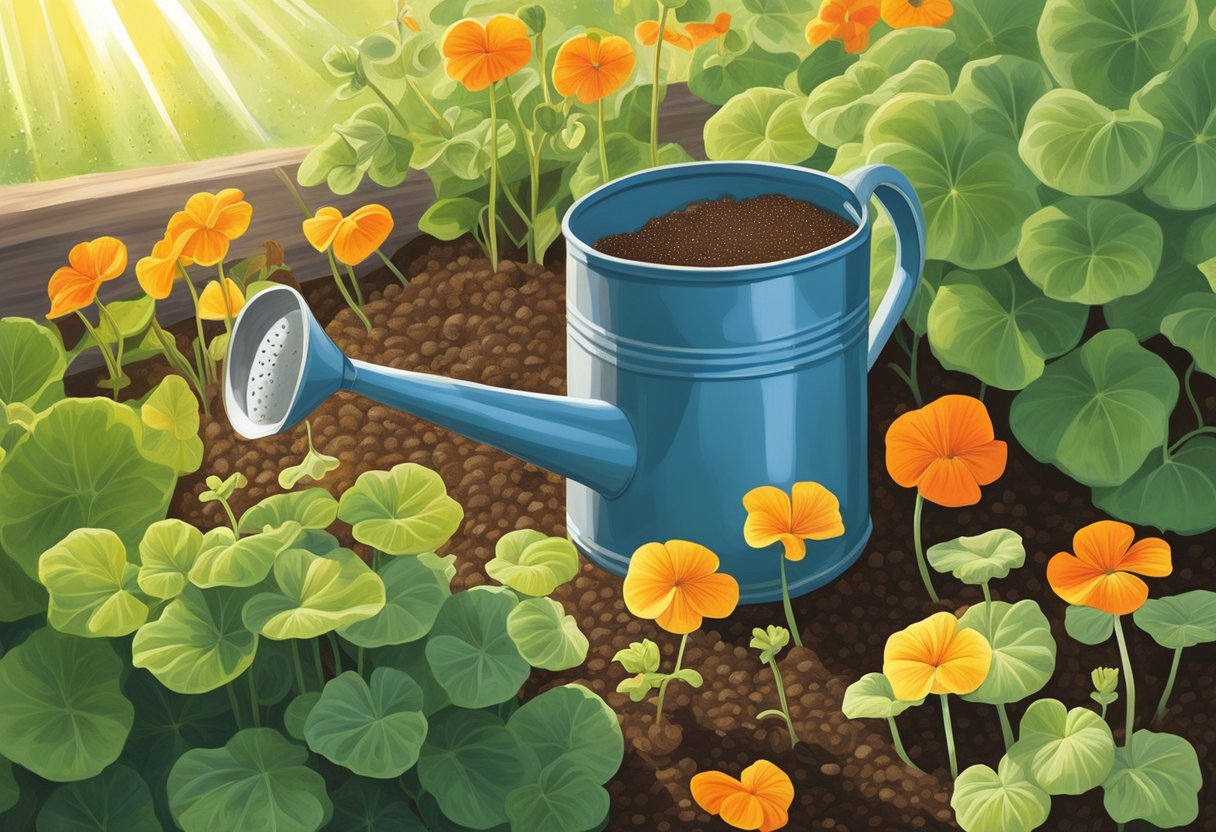
Types of Nasturtium
Nasturtiums are a popular flowering plant that comes in a variety of types. There are trailing, climbing, and bush varieties, each with their own unique growth habits and characteristics. The most common type of nasturtium is the annual variety, which grows quickly and produces vibrant flowers.
Nasturtium Growth Habits
Nasturtiums are known for their edible leaves and peppery flowers, making them a popular addition to salads. They come in a range of colors, from bright oranges and yellows to deep reds and purples. Dwarf varieties are perfect for small gardens or containers, while climbing varieties can be trained to grow up trellises or walls.
Nutritional and Culinary Uses
In addition to their aesthetic appeal, nasturtiums are also prized for their nutritional and culinary uses. The leaves and flowers of the plant have a peppery taste and are high in vitamin C. They can be used to add flavor and color to salads, sandwiches, and other dishes. The flowers can also be used to make a natural dye for fabrics.
Overall, nasturtiums are a versatile and easy-to-grow plant that can add both beauty and flavor to any garden or culinary creation.
When to Plant Nasturtium Seeds
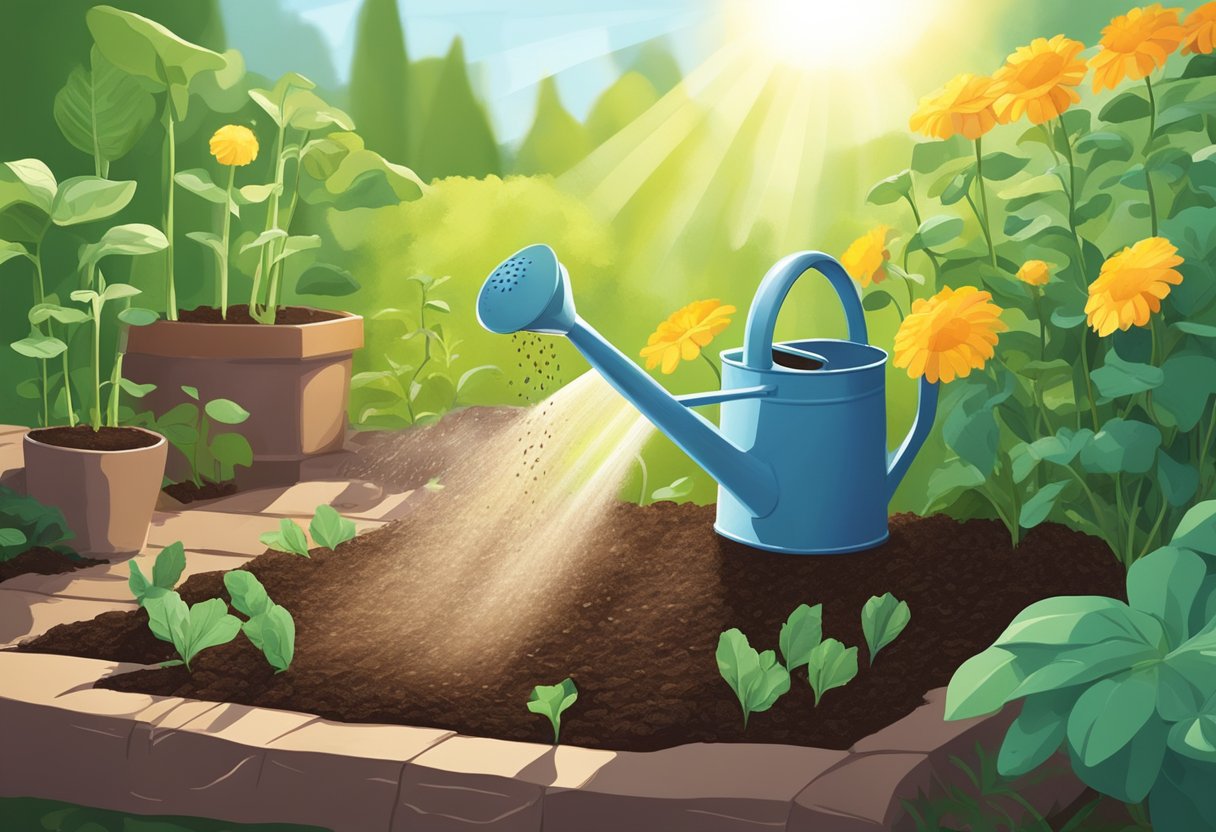
Nasturtiums are an easy-to-grow annual flower that are perfect for adding color to any garden or container. Knowing when to plant nasturtium seeds is important for ensuring a successful growing season. In this section, we will discuss the best time of year to plant nasturtium seeds, understanding frost dates, and the differences between indoor and outdoor planting.
Best Time of Year
The best time to plant nasturtium seeds is in the spring after the last frost has passed. In most regions, this is typically between late March and early May. Nasturtiums prefer warm soil temperatures, so it’s important to wait until the soil has warmed up before planting.
Nasturtiums can also be planted in the fall, but it’s important to give them enough time to grow and mature before the first frost. In most regions, this means planting seeds in late summer, around August or early September.
Understanding Frost Dates
Frost dates are important to consider when planting nasturtium seeds. Nasturtiums are sensitive to frost and will not survive if exposed to freezing temperatures. The last frost date in the spring and the first frost date in the fall will vary depending on your location.
To determine the last frost date in your area, check with your local Cooperative Extension Service or use an online tool. Once you know the last frost date, you can count back from that date to determine when to plant your nasturtium seeds.
Indoor vs. Outdoor Planting
Nasturtium seeds can be started indoors or sown directly in the garden. Starting seeds indoors allows you to get a head start on the growing season and can help ensure a higher germination rate.
To start seeds indoors, plant them in seed starting mix about 4-6 weeks before the last frost date. Keep the soil moist and warm, and provide plenty of light. Once the seedlings have developed their second set of leaves, they can be transplanted into the garden.
Direct sowing seeds in the garden is also a viable option. Wait until after the last frost date and sow the seeds about 1/2 inch deep and 10-12 inches apart. Keep the soil moist until the seeds germinate, which should take about 7-10 days.
Overall, nasturtiums are easy to grow and can be planted in a variety of ways. By following these tips and understanding when to plant nasturtium seeds, you can enjoy beautiful blooms all season long.
Where to Plant Nasturtium Seeds

Nasturtiums are easy to grow and can be planted in a variety of locations. However, to ensure the best results, it is important to choose the right location. Here are some factors to consider when deciding where to plant nasturtium seeds.
Soil Requirements
Nasturtiums prefer well-drained soil that is rich in organic matter. They can tolerate a range of soil types, but they do not do well in heavy clay soil. If the soil is not well-drained, the plants may develop root rot. To improve drainage, add compost or sand to the soil.
Sun Exposure
Nasturtiums thrive in full sun, but they can also tolerate partial shade. If planted in a shady location, they may not produce as many flowers. For best results, choose a location that receives at least six hours of sunlight per day.
Choosing the Right Location
Nasturtiums can be planted in the ground, in pots, or in containers such as a window box or hanging basket. They can also be trained to climb a fence or trellis. When choosing a location, consider the color of the flowers. Orange and yellow varieties look great in a vegetable garden, while white varieties add a cool touch to a shady area.
Overall, nasturtiums are versatile plants that can be planted in a variety of locations. As long as the soil is well-drained and the plants receive enough sunlight, they should thrive.
How to Plant Nasturtium Seeds
Nasturtiums are easy-to-grow annuals that are perfect for adding a splash of color to your garden. They can be planted directly into the ground or grown in containers. Here are some tips on how to plant nasturtium seeds:
Preparing the Soil
Before planting your nasturtium seeds, it is important to prepare the soil. Nasturtiums grow best in well-draining soil that is rich in organic matter. To prepare the soil, add compost or well-rotted manure to the area where you plan to plant the seeds. This will help to improve the soil’s fertility and texture.
Sowing Techniques
Nasturtium seeds can be sown directly into the ground or started indoors and transplanted outside. If sowing directly into the ground, wait until the danger of frost has passed and the soil has warmed up. Sow the seeds 1/2 inch deep and 10-12 inches apart. Water the soil gently after sowing to help settle the seeds in place.
If starting the seeds indoors, sow them in trays or pots filled with seed-starting mix. Keep the soil moist and warm until the seeds germinate. Once the seedlings have developed their second set of leaves, they can be transplanted outside.
Watering and Care
Nasturtiums prefer moist soil but can tolerate some drought. Water the plants regularly during dry spells, but be careful not to overwater as this can lead to root rot. Nasturtiums do not require fertilization, but you can give them a boost by adding a balanced fertilizer to the soil before planting.
In conclusion, planting nasturtium seeds is a simple process that can be done by anyone with a little bit of gardening knowledge. With the right soil preparation, sowing techniques, and watering and care, you can enjoy a beautiful display of colorful nasturtiums in your garden.
Maintaining Nasturtium Plants
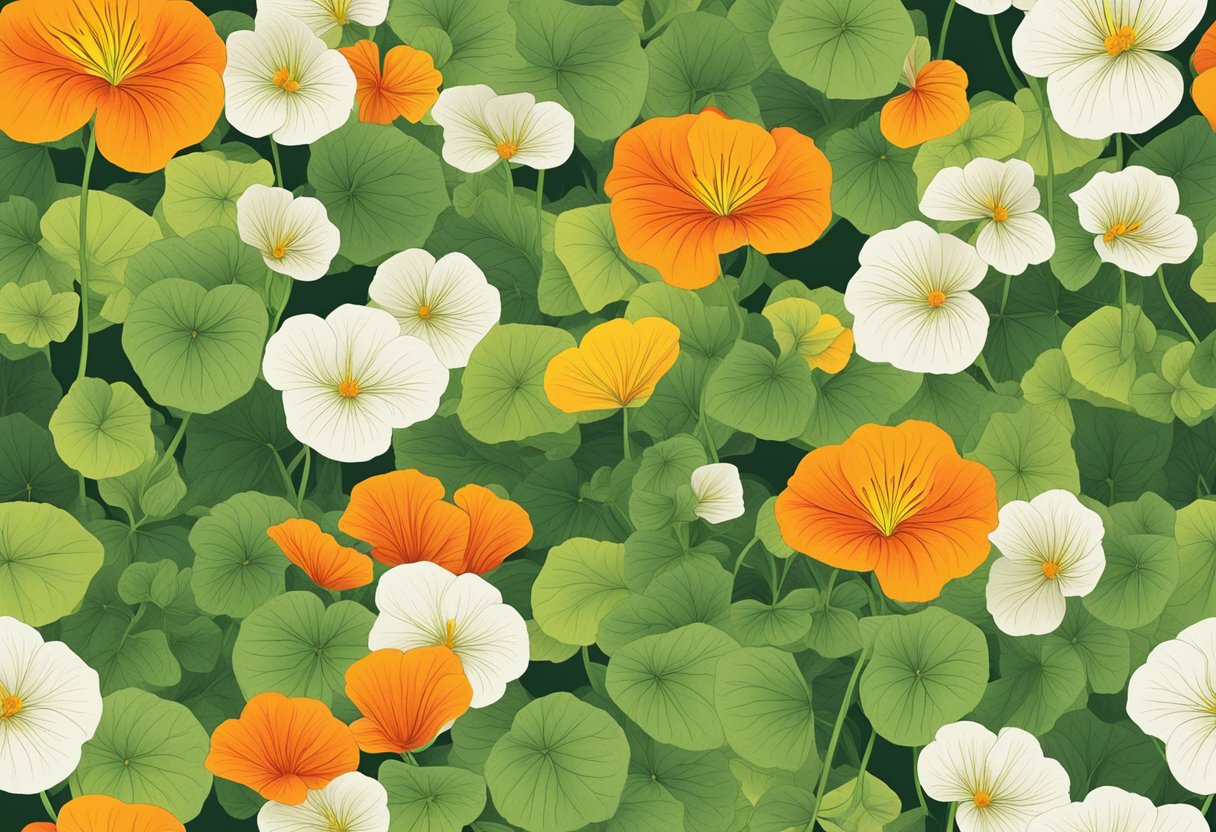
Nasturtium plants are easy to grow and maintain. With proper care, they can thrive and produce beautiful flowers throughout the growing season. In this section, we will discuss some of the key practices for maintaining healthy nasturtium plants.
Fertilization Practices
Nasturtium plants do not require heavy fertilization, but a light feeding of a balanced fertilizer can help promote healthy growth and blooming. It is recommended to fertilize the plants once a month during the growing season. Be sure to follow the instructions on the fertilizer package for the correct amount and application method.
Dealing with Pests
One of the most common pests that can affect nasturtium plants is aphids. These small insects can cause damage to the leaves and flowers of the plant. To deal with aphids, it is recommended to use an insecticidal soap or neem oil spray. These products are safe to use and can effectively control the pest population.
Pruning and Training
Nasturtium plants can grow as a bush or a vine. If you want the plant to grow as a vine, it is recommended to provide a trellis or support for the plant to climb. Pruning can also help promote bushier growth and more blooms. To prune, simply remove any dead or damaged leaves and flowers.
Nasturtium plants also make great companion plants for vegetables such as tomatoes and cucumbers. They can help repel pests and attract beneficial insects to the garden.
In summary, maintaining healthy nasturtium plants is easy with proper care and attention. Fertilize lightly, deal with pests promptly, and prune and train as needed. With these practices in place, your nasturtium plants will thrive and add beauty to your garden.
Harvesting and Using Nasturtiums
When and How to Harvest
Nasturtiums are an easy-to-grow flowering plant that produces edible flowers and leaves. The best time to harvest nasturtiums is in the morning when the flowers are fully open and the dew has dried. Simply pinch off the flowers at the base of the stem or use a sharp pair of scissors to cut them off. The leaves can be harvested at any time, but it is best to pick them when they are young and tender.
Preserving Nasturtiums
Nasturtiums can be preserved in a variety of ways. One popular method is to pickle the unopened buds and use them as a substitute for capers. To do this, place the buds in a jar with vinegar, salt, and spices and let them sit for a few weeks. Another way to preserve nasturtiums is to dry the leaves and flowers and store them in an airtight container. Dried nasturtiums can be used to make tea or added to soups and stews for flavor.
Nasturtiums in the Kitchen
Nasturtiums have a peppery, slightly sweet flavor that makes them a popular garnish for salads and other dishes. The flowers can be used whole or the petals can be separated and sprinkled over the dish. The leaves can be used in place of basil or parsley in pesto or added to sandwiches for a spicy kick. Nasturtiums can also be used to make a colorful and flavorful compound butter by mixing chopped flowers and leaves with softened butter.
Nasturtium Varieties and Their Uses
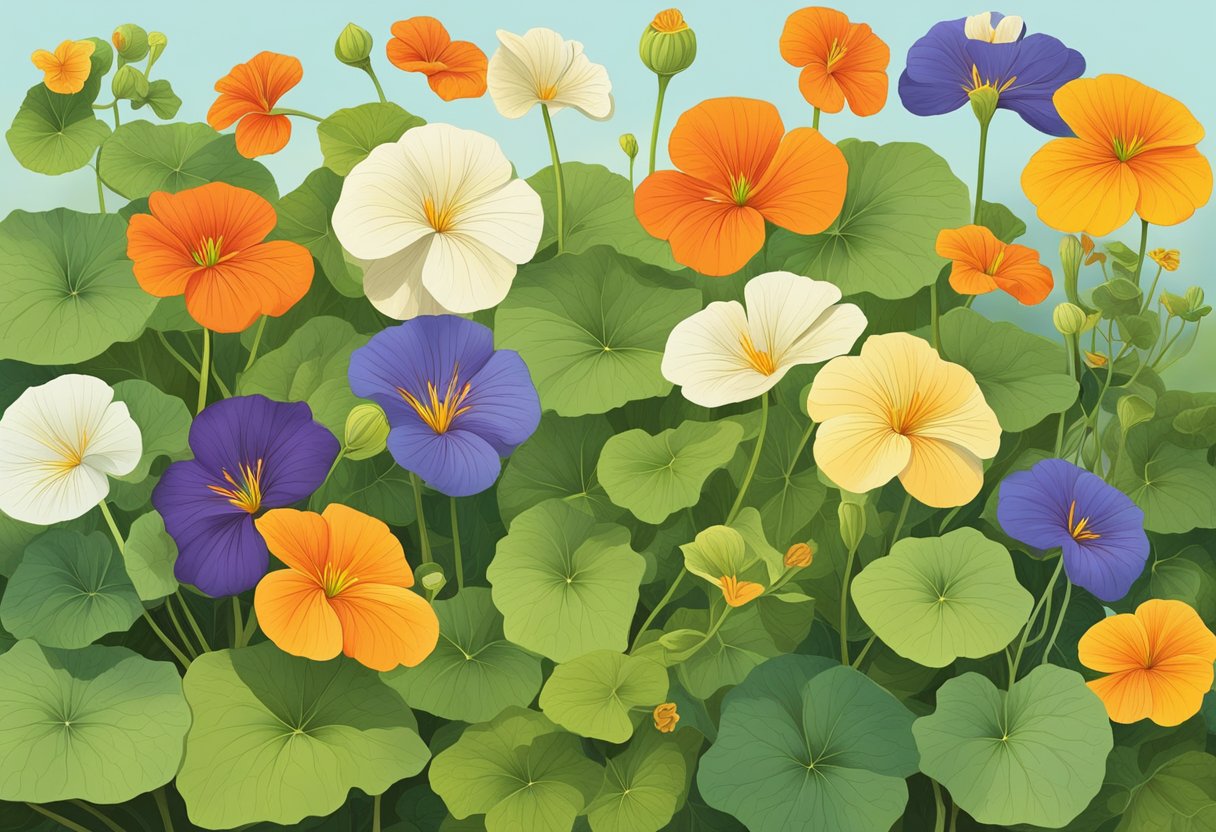
Nasturtiums are a versatile and easy-to-grow plant that can add a splash of color to any garden. There are many different varieties of nasturtiums available, each with their own unique characteristics and uses.
Popular Nasturtium Cultivars
Compact varieties of nasturtiums are perfect for small gardens or container planting. One popular compact variety is ‘Peach Melba’, which produces peach-colored flowers with a yellow center. Another popular compact variety is ‘Empress of India’, which has dark red flowers and is a great ground cover.
Color Variations and Selection
Nasturtiums come in a range of colors, including red, orange, yellow, and cream. When selecting a variety, it’s important to consider the color of the flowers and how they will complement other plants in the garden. For example, red nasturtiums can add a bold pop of color to a garden, while cream-colored varieties can provide a softer, more subtle look.
Specialty Uses for Different Types
Different types of nasturtiums can be used for a variety of purposes. For example, climbing varieties such as ‘Tropaeolum majus’ can be trained to grow up trellises or fences, while compact varieties are perfect for borders or edging. Some varieties, such as ‘Empress of India’, are also edible and can be used in salads or as a garnish.
Overall, nasturtiums are a great choice for gardeners of all skill levels. They are easy to grow, come in a range of colors and varieties, and can be used in a variety of ways to add beauty and interest to any garden.
Companion Planting with Nasturtiums

Nasturtiums are known for their vibrant colors and peppery taste. They are also easy to grow and can be used as companion plants in the garden. Companion planting is a technique used to maximize the use of space, nutrients, and sunlight in the garden. Nasturtiums are great companion plants because they attract beneficial insects and repel harmful pests.
Benefits of Companion Planting
Nasturtiums are known to attract beneficial insects such as butterflies, bees, and ladybugs. These insects help to pollinate other plants in the garden and also act as natural pest control. Nasturtiums are also known to repel harmful pests such as aphids, whiteflies, and cucumber beetles. This makes them a great companion plant for vegetables such as cabbage, broccoli, cucumber, and beans.
Suitable Companion Plants
Nasturtiums are great companion plants for climbing types of vegetables such as tomato, cucumber, and beans. They can also be planted alongside vegetables such as cabbage, broccoli, and squash. Nasturtiums are also great companion plants for herbs such as rosemary, thyme, and sage.
Avoiding Unfavorable Combinations
While nasturtiums are great companion plants, there are some plants that should not be planted alongside them. Nasturtiums should not be planted alongside brassicas such as kale and mustard greens. This is because nasturtiums can attract cabbage white butterflies, which can lay their eggs on the brassicas, leading to infestation.
Overall, growing nasturtiums as companion plants is a great way to maximize space, nutrients, and sunlight in the garden. They attract beneficial insects, repel harmful pests, and can be planted alongside a variety of vegetables and herbs. Nasturtiums are also a great plant for children to grow as they are easy to care for and can be used in salads and other dishes.
Seasonal Care for Nasturtiums

Nasturtiums are annuals that are easy to grow and care for. They are known for their vibrant flowers and green leaves, and are a popular choice for borders and obelisks. Here are some tips for seasonal care of nasturtiums.
Spring Preparation
Nasturtium seeds germinate best in warm soil, so it’s best to wait until after the last frost to plant them. Before planting, prepare the soil by adding compost or other organic matter to improve drainage and soil structure. Nasturtiums prefer full sun but can tolerate some shade. Plant the seeds about 1 inch deep and 10-12 inches apart. Water the seeds regularly, but do not overwater.
Summer Maintenance
Once the nasturtiums start growing, they require minimal maintenance. Water them regularly, especially during dry spells, but avoid getting water on the leaves as this can cause mildew. Deadhead the flowers regularly to encourage more blooms. Nasturtiums do not require fertilization, but if the leaves start to turn yellow, they may need a boost of nitrogen.
Fall and Winter Considerations
As the weather starts to cool down, nasturtiums may start to die back. However, they can tolerate light frost and may continue to bloom until the first hard frost. In colder climates, nasturtiums will not survive the winter and should be removed from the garden. In warmer climates, they may self-seed and come back the following year. If you want to save the seeds, wait until the pods dry out and turn brown before harvesting them.
Overall, nasturtiums are easy to care for and add a pop of color to any garden. With the right temperature and growing conditions, they can thrive all season long.
Frequently Asked Questions
What is the best time of year to plant nasturtium seeds in colder climates?
Nasturtium seeds should be planted after the last frost date in your area. In colder climates, this is typically in late spring or early summer. The soil temperature should be at least 60°F (15°C) for successful germination.
How can I ensure successful germination of nasturtium seeds?
Nasturtium seeds are easy to germinate and typically sprout within 7-10 days. To ensure successful germination, plant the seeds in well-draining soil and keep the soil consistently moist but not waterlogged. The seeds should be planted no deeper than 1 inch (2.5 cm) and spaced 8-12 inches (20-30 cm) apart.
Are there any companion plants to avoid when planting nasturtiums?
Nasturtiums are known to repel certain pests, making them a great companion plant for vegetables like tomatoes and cucumbers. However, they should not be planted near brassicas (such as broccoli, cabbage, and cauliflower) as they can attract aphids and other pests that can harm these plants.
Can nasturtiums be effectively grown in containers?
Yes, nasturtiums can be grown in containers as long as the container is at least 12 inches (30 cm) deep and has good drainage. Use a high-quality potting mix and keep the soil consistently moist but not waterlogged. Nasturtiums do well in containers as they have shallow roots and can be easily moved to different locations.
What temperature range is ideal for growing nasturtiums?
Nasturtiums prefer temperatures between 65-75°F (18-24°C) during the day and 50-60°F (10-15°C) at night. They can tolerate higher temperatures but may not flower as well in extreme heat.
Will nasturtiums reseed themselves, or do they need to be replanted annually?
Nasturtiums are annuals that will reseed themselves if allowed to go to seed. However, they may not come back true to the original plant and may have slightly different characteristics. To ensure consistent growth and flower color, it’s best to replant nasturtiums annually.

